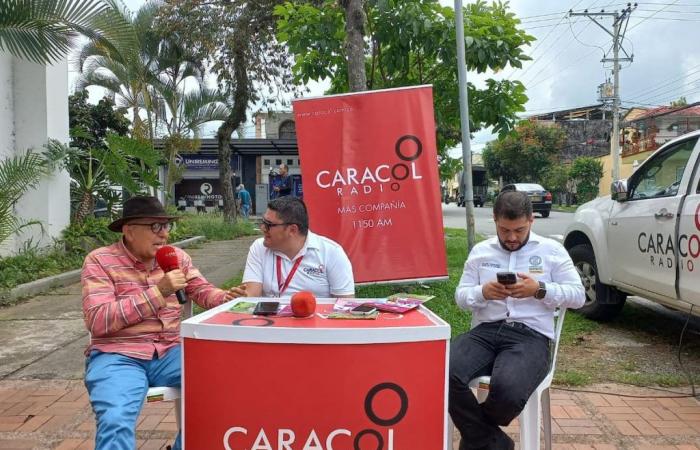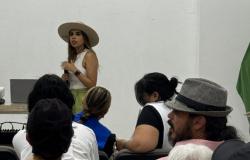ARMENIA
During the forum on the Coffee Cultural Landscape led by the Ministry of Culture of the department speaking about the 13 years of the UNESCO declaration as a world heritage site we speak with the academic and teacher of the University of Quindío Gustavo Pinzón who has been before, at the time and after the declaration of the PCC and his reflections and concepts of this declaration
There are like checks and balances.
Some who are too pessimistic claim that we are at risk, I’m not that pessimistic. Why not because we take into account the attributes of the landscape, which are 16, We propose four fundamental attributes there. apart from coffee, small property, multiple crops, natural heritage and water resources.
I think that definitively the reduction that there has been in coffee areas in the department of Quindío very high with us we delimited the landscape it was 33,000 hectares now there are 18,000 in general and 16,000 in countries.
I reiterate. Who has made land use changes? It makes an international bourgeoisie. a national commercial bourgeoisie and urban landowners For those who, with respect, the territory is an economic resource, it is not a heritage. So that the territory is heritage to the small owners who live on the farm, consequently, when we locate those attributes, small multi-crop property, it is going to be them who are going to remain in the landscape or I am quite worried about the large coffee growers because I have a coffee grower. great that my friends are going to have problems, they already have problems with the workforce when the harvest is a very serious problem, but when that thing that seems very strange to me, Quindío takes the first places for many years in unemployment in the country because they are not to work on the farm the big question.
Urban and rural architecture of the PCC
UNESCO was very concerned with architecture for rural architecture due to the deterioration of the rural agenda. The heritage of a rural house seems to me that the municipalities only reduce the heritage inventory to the urban one and one has to remember that it is an agro-productive landscape, consequently the 16 attributes that we have have to do with production and also with the associated architecture to rural houses, then it must be protected, because I have also seen in some rural homes a very marked influence of urban ideology, colors like fuchsias, violets, like phosphorescent cricket greens that are completely a denial of the natural environment of the landscape, Of course the houses were made with the colors of nature, lemon green, cherry red, blue, sapote, yellow white.
Tourism and PCC
Professor Gustavo Pinzón questioned that many of the issues of the Coffee Cultural Landscape are focused on tourism and pointed out “to me that seems very serious, if you see the 16 attributes of the PCC, there is no tourism, Tourism is not taken into account. And for Unesco, what they value is the territory, not tourism, but the cultural production derived from its landscapes, that is what they value, so it seems to me that it is a very bad sign even now for tourism. . It seems to you that it’s not the way, it’s a very bad sign to say those things. Now they did it. Yesterday I raised some things that seemed harsh and radical to me. Now I am debating the facades of these traditional municipalities were heritage facades whose houses had the colors of nature. Just like the homes of rural architecture.
With the rise of tourism to bring much more to this type of population, tourism as an economic resource, then all the facades change to turn them into an attraction for tourism. I can’t imagine in Guatavita with the colors here, people said, no here there is a maximum of three colors white wood color and ocher or black no more. I imagine neither Guatavita nor Leiva nor Girón nor landscape bars with an economic resource of exploitation of tourism
Felipe Robledo Secretary of Culture of the department
Here we are talking about good Coffee Cultural Landscape There are several issues here, one of them we have seen is that there is a common problem of losing several hectares, thousands of hectares of coffee in all departments. There are also, of course, other more complex elements such as urban development. in which, of course, cities like Armenia Pereira Dosquebradas Manizales in their They have been slowly eating up part of the rurality that made them up and that is certainly putting our PCC at risk.
But there are also some strong points in which we can feel proud. On the one hand, we have the constitution in the case of Quindío itself of several municipal committees, we are an example within the PCC within this we also have as a common agenda the development of the Coffee Cultural Landscape chair that in the case of Quindío it will be done with the vision from Quindío and of course we are also collecting all those gentle needs and problems that we have in common from our various territories to put them on a national agenda so that the National Government hears a single voice and it also allows you to adjust a single budget
CRQ and Ministry of Environment
The environmental authority in Quindío warned that the land use conflict is the greatest threat to the coffee cultural landscape.
Within the framework of the 13 years of the declaration of the coffee cultural landscape, the director of the Regional Autonomous Corporation of the department Jaider Lopera He announced that coordination between institutions is key to preserving the characteristics of the territory.
Environmental authorities and the Coffee Cultural Landscape
He said that the idea is to implement strategies so that coffee growers do not change their agricultural activity because the land use conflict It is the greatest threat to the declaration of the coffee cultural landscape.
It was clear that the above depends on the territorial planning instruments that are outdated and they do not incorporate this reality focused on their protection.
The director of territorial environmental planning of the Ministry of Environment, Gustavo Adolfo Carrión He highlighted that they are ready to provide support to the efforts proposed by the territorial entities.
He referred to the strengths and threats regarding the declaration where he maintained that international recognition and unification around protection is positive in the region.
Regarding the difficulties, he said that there is crisis of the coffee economy, monocultures, small hydroelectric plants and mining that are generating transformation in the landscape.
Without the coffee base there will be no coffee cultural landscape as a world heritage site.
Today marks 13 years since the declaration of the Coffee Cultural Landscape






